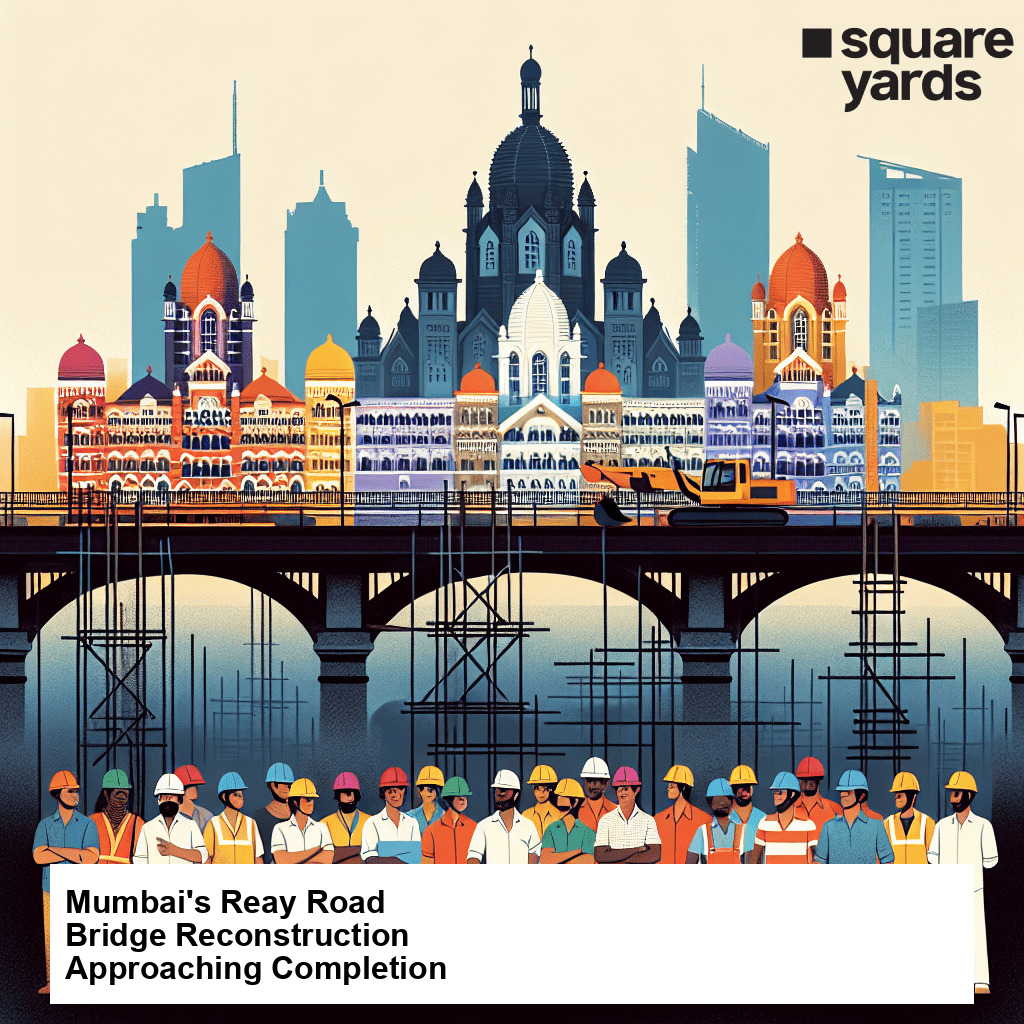The Maharashtra Rail Infrastructure Development Corporation (MRIDC), popularly known as MahaRail, has been entrusted with an essential task by the Brihanmumbai Municipal Corporation (BMC). They are assigned with the responsibility of reconstructing ten dilapidated British-era road overbridges (ROBs) in Mumbai, including the crucial Reay Road cable-stayed bridge.
Significant Progress in Reay Road Cable-stayed Bridge Reconstruction
Officials have reported that the foundation work for the Reay Road project, a critical east-west connector, has been successfully completed. The construction is currently in progress, with the girder launching and superstructure work underway. This indicates that the ROB is approximately 70% complete. Officials are optimistic that the entire project will be concluded by May 2024, provided all right-of-way (ROW) concerns are resolved.
A Strategic Approach to Minimize Disruptions
MRIDC has adopted a strategic approach to minimize disruptions to the city’s busy traffic during the reconstruction. Their plan involves the construction of a new cable-stayed bridge adjacent to the existing one, followed by the demolition of the old structure. The aim of this plan is to ensure minimal hindrance to both vehicular and pedestrian movement throughout the construction phase.
Relocation Efforts and Remaining Structures
Since the construction commenced on February 14, 2022, a significant effort has been put into the relocation of various structures in the area. So far, 156 structures, including 130 hutments and 15 shops, have been successfully relocated. Only a few structures, including one ticket counter and 15 sheds, are yet to be transferred. Mumbai Port Trust (MbPT) and Central Railway will take charge of relocating these remaining structures.
The Construction Process and Design Details
The Reay Road ROB incorporates a center pylon system where stay cables are erected on the central spine girder of the bridge. MahaRail has undertaken the design of this cable-stayed ROB, ensuring minimal use of piers and foundation. Utilizing cables and a segmental construction scheme enables better quality control and reduces construction time. The individual segments are prefabricated at a separate fabrication yard and later transported to the site for erection. For ease and efficiency, a simple steel girder system is employed for constructing the straight alignment sections of the bridge.
Enhanced Structure and Traffic Management
The new cable-stayed ROB is designed for a longer span, resulting in fewer inconveniences related to underground utilities. The reconstructed bridge will feature six lanes, including a designated footpath for pedestrians, ensuring smooth traffic flow. Importantly, the bridge structures will allow traffic movement through the underpass of Barrister Nath Pai Road while maintaining the required vertical clearance for vehicles under the Eastern Freeway, following the guidelines set by the Indian Roads Congress (IRC). Furthermore, MRIDC has incorporated architectural LED lighting into the design, enhancing the bridge’s aesthetic appeal. Additionally, an advanced bridge monitoring system has been implemented to improve safety parameters. In conclusion, the ongoing MahaRail reconstruction project is set to make a significant transformation to Mumbai’s road overbridges. The reported progress on the Reay Road cable-stayed bridge reconstruction and the adopted strategic approach to minimize disruptions demonstrate MahaRail’s commitment to ensuring a streamlined construction process. Once completed, the new cable-stayed ROB will not only enhance the city’s transportation network but also contribute to its aesthetic appeal and safety standards.





